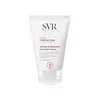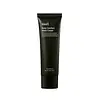What's inside
What's inside
 Key Ingredients
Key Ingredients

 Benefits
Benefits

 Concerns
Concerns

 Ingredients Side-by-side
Ingredients Side-by-side

Water
Skin ConditioningEthylhexyl Stearate
EmollientButyrospermum Parkii Butter
Skin ConditioningGlyceryl Stearate
EmollientCaprylic/Capric Triglyceride
MaskingGlycerin
HumectantPEG-100 Stearate
Ammonium Acryloyldimethyltaurate/Vp Copolymer
Camelina Sativa Seed Oil
Skin ConditioningHelianthus Annuus Seed Oil
EmollientTocopherol
AntioxidantTocopheryl Acetate
Antioxidant1,2-Hexanediol
Skin ConditioningArachidyl Alcohol
EmollientArachidyl Glucoside
EmulsifyingBehenyl Alcohol
EmollientCitric Acid
BufferingO-Cymen-5-Ol
AntimicrobialSodium Benzoate
MaskingParfum
MaskingWater, Ethylhexyl Stearate, Butyrospermum Parkii Butter, Glyceryl Stearate, Caprylic/Capric Triglyceride, Glycerin, PEG-100 Stearate, Ammonium Acryloyldimethyltaurate/Vp Copolymer, Camelina Sativa Seed Oil, Helianthus Annuus Seed Oil, Tocopherol, Tocopheryl Acetate, 1,2-Hexanediol, Arachidyl Alcohol, Arachidyl Glucoside, Behenyl Alcohol, Citric Acid, O-Cymen-5-Ol, Sodium Benzoate, Parfum
Water
Skin ConditioningGlycerin
HumectantCaprylic/Capric Triglyceride
MaskingHelianthus Annuus Seed Oil
EmollientUndecane
EmollientPolyglyceryl-3 Distearate
Emulsifying1,2-Hexanediol
Skin ConditioningTridecane
PerfumingStearyl Alcohol
EmollientButyrospermum Parkii Butter
Skin ConditioningHydrogenated Lecithin
EmulsifyingGlyceryl Stearate Citrate
EmollientTrehalose
HumectantBetula Platyphylla Japonica Bark Extract
Skin ConditioningOrbignya Oleifera Seed Oil
EmollientPanthenol
Skin ConditioningPantolactone
HumectantPentylene Glycol
Skin ConditioningButylene Glycol
HumectantTocopherol
AntioxidantAlanine
MaskingArginine
MaskingCysteine
AntioxidantGlycine
BufferingHistidine
HumectantIsoleucine
Skin ConditioningLeucine
Skin ConditioningLysine
Skin ConditioningMethionine
Skin ConditioningPhenylalanine
MaskingProline
Skin ConditioningSerine
MaskingThreonine
Tyrosine
MaskingValine
MaskingAspartic Acid
MaskingGlutamic Acid
HumectantHyaluronic Acid
HumectantHydrolyzed Hyaluronic Acid
HumectantHydrolyzed Sodium Hyaluronate
Skin ConditioningHydroxypropyltrimonium Hyaluronate
Potassium Hyaluronate
Skin ConditioningSodium Hyaluronate
HumectantSodium Hyaluronate Crosspolymer
HumectantSodium Acetylated Hyaluronate
HumectantArachidyl Alcohol
EmollientBehenyl Alcohol
EmollientCetyl Alcohol
EmollientAcrylates/C10-30 Alkyl Acrylate Crosspolymer
Emulsion StabilisingTetrasodium EDTA
Tetrasodium Iminodisuccinate
Tromethamine
BufferingCarbomer
Emulsion StabilisingBehenic Acid
CleansingMyristic Acid
CleansingStearic Acid
CleansingEthylhexylglycerin
Skin ConditioningWater, Glycerin, Caprylic/Capric Triglyceride, Helianthus Annuus Seed Oil, Undecane, Polyglyceryl-3 Distearate, 1,2-Hexanediol, Tridecane, Stearyl Alcohol, Butyrospermum Parkii Butter, Hydrogenated Lecithin, Glyceryl Stearate Citrate, Trehalose, Betula Platyphylla Japonica Bark Extract, Orbignya Oleifera Seed Oil, Panthenol, Pantolactone, Pentylene Glycol, Butylene Glycol, Tocopherol, Alanine, Arginine, Cysteine, Glycine, Histidine, Isoleucine, Leucine, Lysine, Methionine, Phenylalanine, Proline, Serine, Threonine, Tyrosine, Valine, Aspartic Acid, Glutamic Acid, Hyaluronic Acid, Hydrolyzed Hyaluronic Acid, Hydrolyzed Sodium Hyaluronate, Hydroxypropyltrimonium Hyaluronate, Potassium Hyaluronate, Sodium Hyaluronate, Sodium Hyaluronate Crosspolymer, Sodium Acetylated Hyaluronate, Arachidyl Alcohol, Behenyl Alcohol, Cetyl Alcohol, Acrylates/C10-30 Alkyl Acrylate Crosspolymer, Tetrasodium EDTA, Tetrasodium Iminodisuccinate, Tromethamine, Carbomer, Behenic Acid, Myristic Acid, Stearic Acid, Ethylhexylglycerin
 Reviews
Reviews

Ingredients Explained
These ingredients are found in both products.
Ingredients higher up in an ingredient list are typically present in a larger amount.
1,2-Hexanediol is a synthetic liquid and another multi-functional powerhouse.
It is a:
- Humectant, drawing moisture into the skin
- Emollient, helping to soften skin
- Solvent, dispersing and stabilizing formulas
- Preservative booster, enhancing the antimicrobial activity of other preservatives
Arachidyl Alcohol is a fatty alcohol made from peanut oil. It is an emollient, emulsifier, and thickener.
You'll most likely find this ingredient as an emulsifier in water-based cosmetics.
Behenyl Alcohol is a type of fatty alcohol (these are different from the drying, solvent alcohols).
Fatty Alcohols have hydrating properties and are most often used as an emollient or to thicken a product. They are usually derived from natural fats and oils; behenyl alcohol is derived from the fats of vegetable oils.
Emollients help keep your skin soft and hydrated by creating a film that traps moisture in.
In 2000, Behenyl Alcohol was approved by the US as medicine to reduce the duration of cold sores.
Learn more about Behenyl AlcoholThis ingredient is also known as shea butter. It is an effective skin hydrator and emollient.
Emollients help soothe and soften your skin. It does this by creating a protective film on your skin. This barrier helps trap moisture and keeps your skin hydrated. Emollients may be effective at treating dry or itchy skin.
Shea butter is rich in antioxidants. Antioxidants help fight free-radicals, or molecules that may harm the body. It is also full of fatty acids including stearic acid and linoleic acid. These acids help replenish the skin and keep skin moisturized.
While Shea Butter has an SPF rating of about 3-4, it is not a sunscreen replacement.
Shea butter may not be fungal acne safe. We recommend speaking with a professional if you have any concerns.
Learn more about Butyrospermum Parkii ButterThis ingredient is an emollient, solvent, and texture enhancer. It is considered a skin-softener by helping the skin prevent moisture loss.
It helps thicken a product's formula and makes it easier to spread by dissolving clumping compounds.
Caprylic Triglyceride is made by combining glycerin with coconut oil, forming a clear liquid.
While there is an assumption Caprylic Triglyceride can clog pores due to it being derived from coconut oil, there is no research supporting this.
Learn more about Caprylic/Capric TriglycerideGlycerin is already naturally found in your skin. It helps moisturize and protect your skin.
A study from 2016 found glycerin to be more effective as a humectant than AHAs and hyaluronic acid.
As a humectant, it helps the skin stay hydrated by pulling moisture to your skin. The low molecular weight of glycerin allows it to pull moisture into the deeper layers of your skin.
Hydrated skin improves your skin barrier; Your skin barrier helps protect against irritants and bacteria.
Glycerin has also been found to have antimicrobial and antiviral properties. Due to these properties, glycerin is often used in wound and burn treatments.
In cosmetics, glycerin is usually derived from plants such as soybean or palm. However, it can also be sourced from animals, such as tallow or animal fat.
This ingredient is organic, colorless, odorless, and non-toxic.
Glycerin is the name for this ingredient in American English. British English uses Glycerol/Glycerine.
Learn more about GlycerinHelianthus Annuus Seed Oil is the oil derived from the seeds of a Sunflower. Sunflower seed oil is non-fragrant. It is an emollient, meaning it helps to soften the skin.
Sunflower seed oil contains many fatty acids. The fatty acids found in sunflower seeds include (from highest amount to least): linoleic acid, myristic acid, palmitic acid, stearic acid, arachidic acid, oleic acid, and linolenic acid.
These fatty acids help the skin create ceramides. Ceramides play a role in repairing the skin barrier.
Helianthus Annuus Seed Oil helps moisturize the skin. This in turn helps the skin look more rejuvenated and smoother.
Sunflowers are rich in vitamin E.
Historians believe Indigenous cultures of North America domesticated sunflowers before corn. Thus they relied on sunflower oil for a variety of uses. One such use is moisturizing skin and hair.
Sunflower seed oil may not be fungal acne safe. We recommend speaking with a professional if you have any concerns.
Learn more about Helianthus Annuus Seed OilTocopherol (also known as Vitamin E) is a common antioxidant used to help protect the skin from free-radicals and strengthen the skin barrier. It's also fat soluble - this means our skin is great at absorbing it.
Vitamin E also helps keep your natural skin lipids healthy. Your lipid skin barrier naturally consists of lipids, ceramides, and fatty acids. Vitamin E offers extra protection for your skin’s lipid barrier, keeping your skin healthy and nourished.
Another benefit is a bit of UV protection. Vitamin E helps reduce the damage caused by UVB rays. (It should not replace your sunscreen). Combining it with Vitamin C can decrease sunburned cells and hyperpigmentation after UV exposure.
You might have noticed Vitamin E + C often paired together. This is because it is great at stabilizing Vitamin C. Using the two together helps increase the effectiveness of both ingredients.
There are often claims that Vitamin E can reduce/prevent scarring, but these claims haven't been confirmed by scientific research.
Learn more about TocopherolWater. It's the most common cosmetic ingredient of all. You'll usually see it at the top of ingredient lists, meaning that it makes up the largest part of the product.
So why is it so popular? Water most often acts as a solvent - this means that it helps dissolve other ingredients into the formulation.
You'll also recognize water as that liquid we all need to stay alive. If you see this, drink a glass of water. Stay hydrated!
Learn more about Water